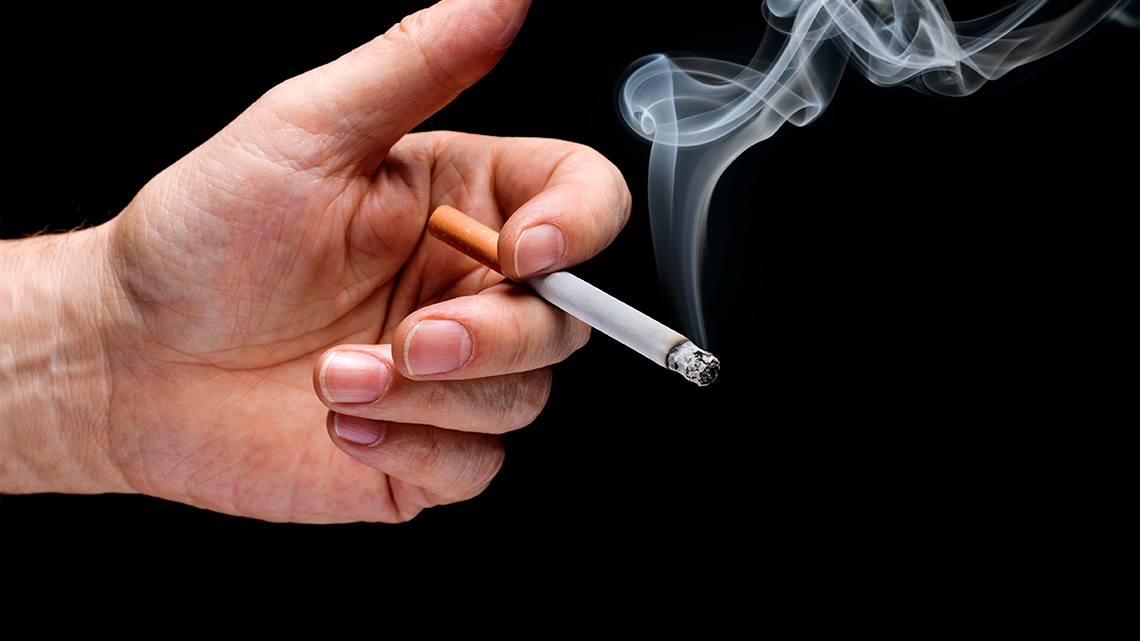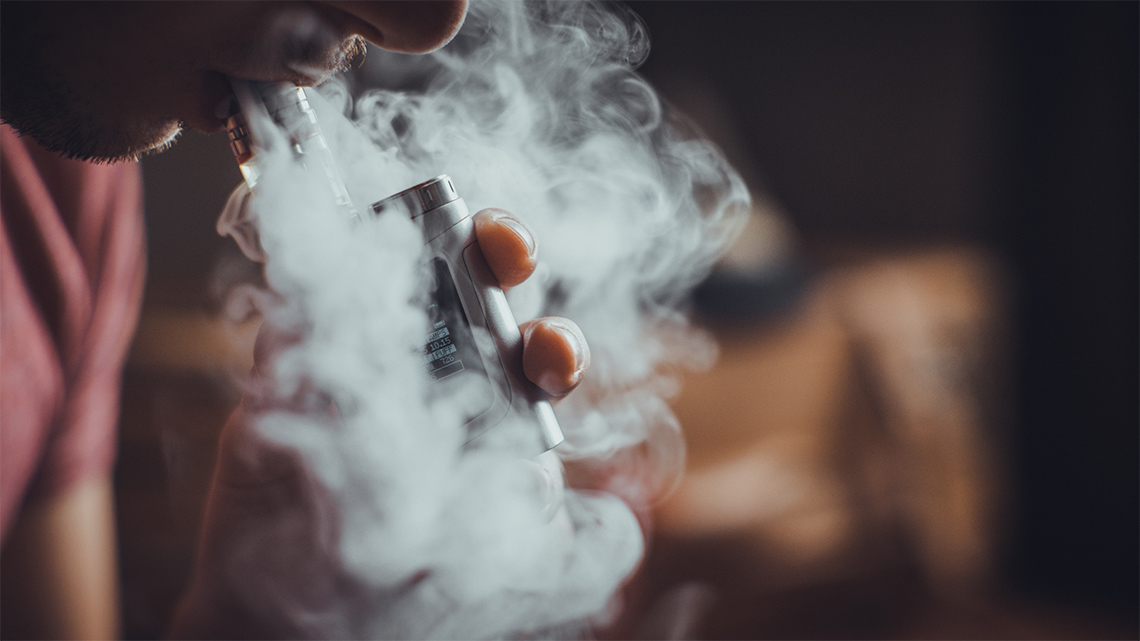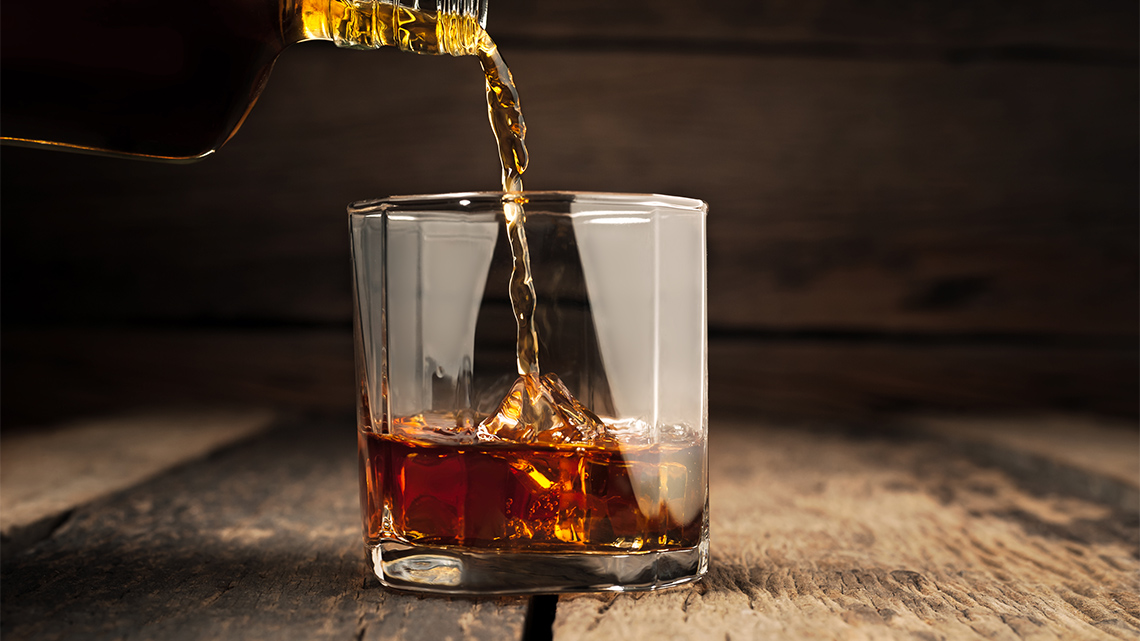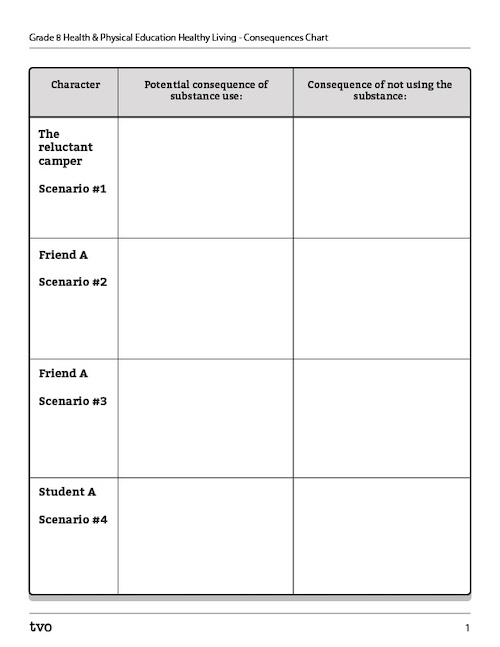Minds On
Addiction and problematic substances
Drugs, alcohol, and addictive substances are common and often glamorized in the media. From music videos to popular television series, teenagers and young adults are often shown drinking alcohol, smoking marijuana and cigarettes, and potentially consuming illegal substances. People may be consuming or experimenting with potentially addictive substances due to this influence of the media.
Addiction can be a problem that many teenagers and adults face in their life.
Press 'Definition' to access a definition for addiction.
Addiction is the inability to stop using a substance or engaging in a behaviour that could cause psychological and physical harm.
As a teenager, it is important to educate yourself about the dangers and risks of drugs and addictive substances, so that you can make informed decisions for your personal well-being.
Which substances do you think are addictive?
Press 'Answer' to access the answer to check if you identified the substances correctly.
ALL choices should be selected from the checklist as they are ALL addictive.
Category chart challenge

All the substances listed above are considered to be addictive. Using the same list, organize them into either physically addictive or psychologically addictive based on what you know already.
Press the following tabs to access the definition to the categories.
Addictive substances:
- nicotine
- alcohol
- steroids
- cocaine
- prescription drugs
- heroine
- marijuana
Note that each addictive substance can potentially fall under both categories.
You may use the Addictive Substances Chart in your notebook or using the following fillable and printable document. If you would like, you can use speech-to-text or audio recording tools to record your thoughts.
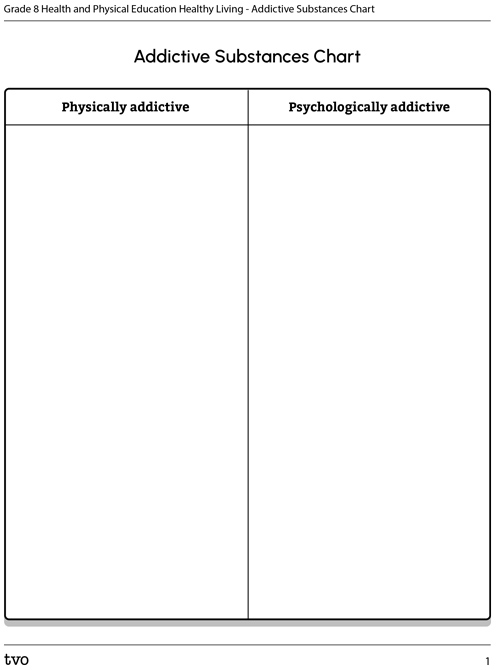
Press the Activity button to access the Addictive Substances Chart.
Activity (Open PDF in a new tab)When you are done, press 'Answer' to access an answer to check if you categorized them correctly.
ALL choices should be selected in both columns as they are ALL physically and psychologically addictive.
Action
The science of addiction

Addiction affects millions of people around the world. But how is an addiction formed?
The same pathway in our brain that helps us survive also helps establish addiction. This pathway is known as the limbic reward system. This system tells other parts of the brain when something is good. This is important for survival as it tells us that food is something good and motivates us to seek out food to eat. It tells the other parts that something is good by releasing a neurotransmitter known as dopamine. When dopamine is released, it causes a person to feel an intense feeling of pleasure which results in them wanting to seek out the thing that caused the pleasure more.
Brainstorm
What are people addicted to?
Brainstorm a list of things you think people can become addicted to and environmental factors that might cause them to become addicted.
What’s the most interesting addiction you’ve heard of?
Share your thoughts with a partner, if possible.
Press 'Answer' to access some examples of things people can become addicted to.
People can become addicted to anything really. Often you hear addiction in relation to drugs, smoking, and alcohol, but you can also develop addictions to things such as social media, gambling, and shopping. The same pathway triggers all these addictions.
When we continuously take pleasure in an addictive substance or behaviour it becomes a habit and can result in changes in our brain where you end up requiring more and more exposure to it to get to the same level of pleasure.
Over time if there is no intervention the addiction can take hold of a person’s entire life. This can have not only negative consequences on themselves, but the people around them.
Imagining outcomes
Explore the following scenarios about addiction and consequences of using addictive substances. Answer the questions found at the end of each scenario.
You can record your thoughts and ideas about the scenario questions in a method of your choice.
Scenario #1: Drinking
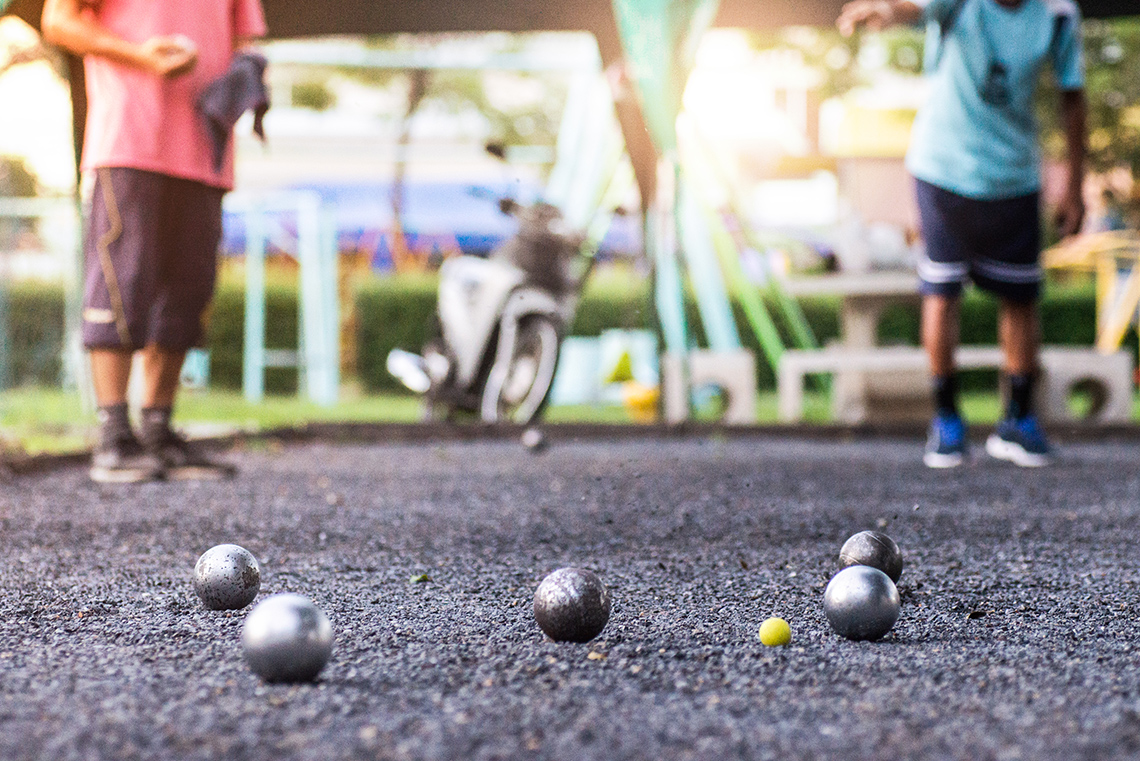
A group of teenagers meet at summer camp. They had an exciting time and had a lot of memorable adventures together. They live in the same city, so they reunite after returning home. They meet up and play bocce ball in the park. As the sun sets, one of them takes out a bottle of vodka from their knapsack. Although some of the camp friends are hesitant, everybody takes a drink from the bottle, except one friend. The other friends encourage the reluctant friend to do the same, since they had done everything together at camp. The reluctant friend is not comfortable drinking alcohol, knows it is illegal and knows their parents would be angry. At the same time, they do not want to lose their reputation of being “cool.”
What should the reluctant camper do?
How do they get out of drinking alcohol in this situation?
For each sentence, select the missing word or phrase from the drop-down menu.
Scenario #2: Vaping

Two friends, (Friend A and Friend B), have started at a new high school together. They are both nervous, but happy to have one another in the exciting, new environment. They meet a lot of new and interesting people. One of the new people gives Friend A a vape to hold so their parents do not find it. Friend A accepts it and laughs it off. Over the rest of the week, Friend B starts to notice that Friend A and the new friends are spending time together more and are vaping together. Whenever Friend A vapes, they do it off to the side, to avoid drawing attention to it. Friend B is starting to worry that Friend A is building up an addiction to nicotine.
How can Friend B show their concern and be supportive by being non-judgmental?
For each sentence, select the missing word from the drop-down menu.
Scenario #3: Marijuana

Two long-time friends play soccer and have started high school together. Some of their new friends occasionally smoke marijuana and keep pressuring them to try. One day after school, the two friends give in to the peer pressure and take part. It makes Friend A cough and feel anxious and paranoid. Friend B is less chatty. Friend B starts to hang out with the new friends more often. They start to miss soccer practice and are often seen glossy-eyed and exhausted. Friend A is concerned for their friend’s well-being and decides it is time to have a chat.
How might this conversation go between the two friends?
For each sentence, select the missing word or phrase from the drop-down menu.
Scenario #4: Drinking
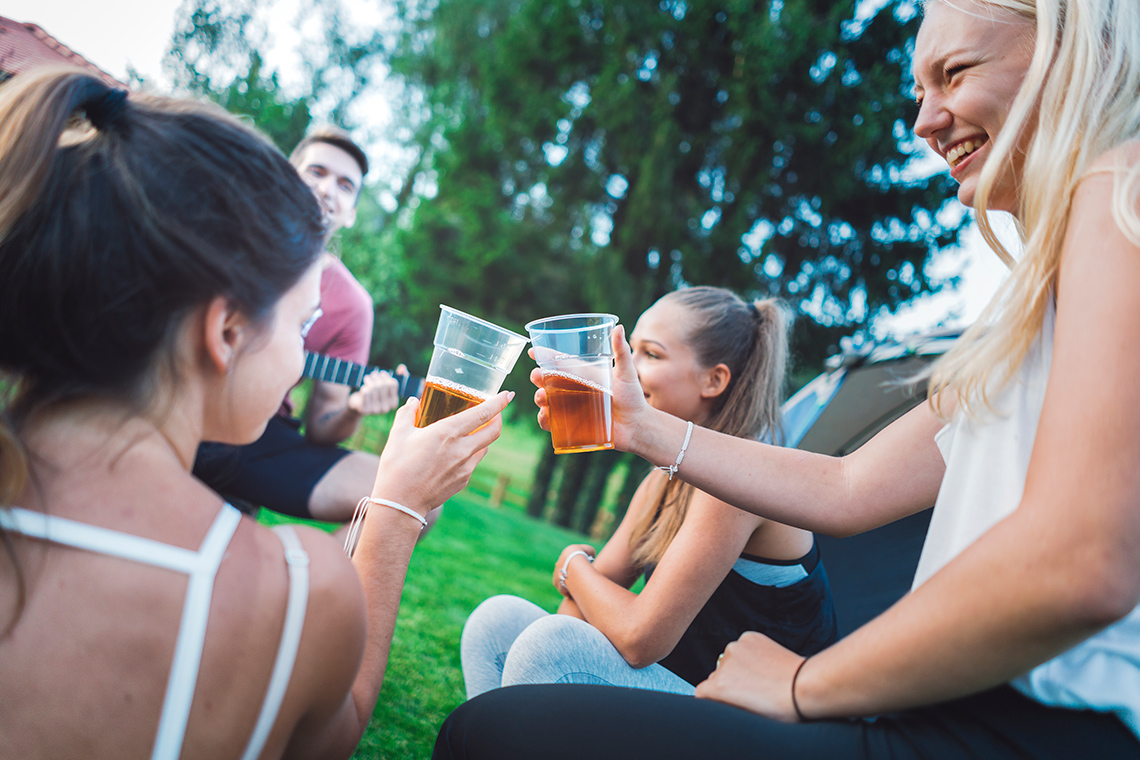
It is the end of the school year, and there is a big party happening in a field. The whole grade is going to be there. In order to go, Student A lies to their parents, and says they are spending the night at a friend’s house, but really intend to just set up a tent in the field like many others. There is a lot of drinking at the party. Student A is consuming a lot of alcohol quickly. Student A falls asleep and does not respond to persistent calling and shaking. Having lied to their parents, the other students are afraid of the consequences of being caught at the party but are terrified for Student A’s safety.
What could be done to help Student A?
For each sentence, select the missing word or phrase from the drop-down menu.
Scenario #5: Drinking and driving

A group of friends are hanging out, playing video games in the basement, eating junk food, and laughing off an exhausting week at school. Friend A has swimming practice early the next morning. One of the friend’s older siblings has offered to drive them home. When it’s time to leave, Friend A goes upstairs to ask for the ride, and is told to wait ten minutes. They ask again fifteen minutes later and are told to wait another ten minutes. Finally, after mentioning the early morning practice, they agree to leave. There are empty beer bottles on the dining room table, and the driver’s eyes seem unfocused. They may be intoxicated and would be driving impaired.
What could Friend A do? How do they get home safely?
For each sentence, select the missing word from the drop-down menu.
Consequences of the scenario

In all of these scenarios, the teens have been placed in uncomfortable and sometimes even dangerous situations.
Returning to each of the characters who were placed into these moral dilemmas, consider the possible consequences of using the substance in question or not using the substance in question.
For each of the characters, determine either possible consequences of them using the substance in question or possible consequences of not using the substance in question.
Complete the Consequences Chart in your notebook or using the following fillable and printable document. If you would like, you can use speech-to-text or audio recording tools to record your thoughts.
When you are done, use the following printable document entitled Consequences Chart Answers to check your answers.
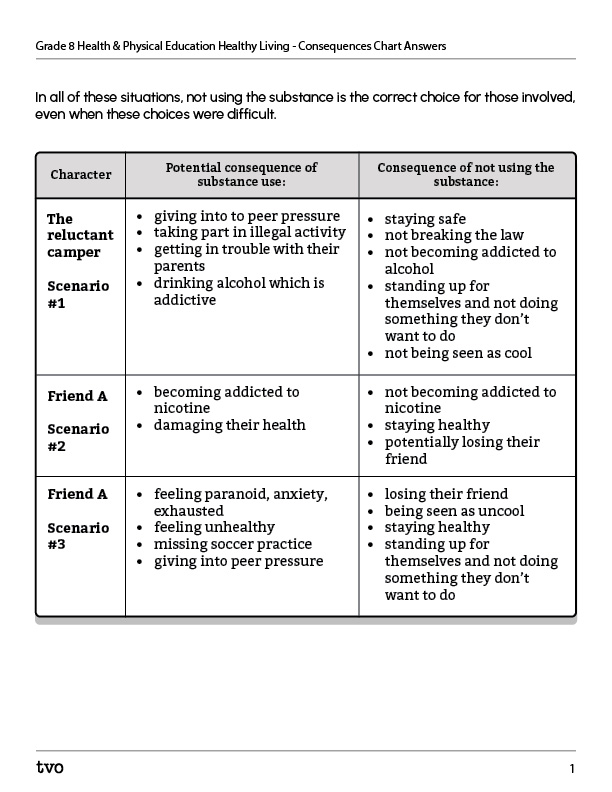
Press the Activity button to access the Consequences Chart Answers.
Activity (Open PDF in a new tab)Consolidation
Spreading the word

Now it’s time to spread awareness about addiction and problematic substances. Choose one addictive substance whether it was one in the Minds On section, the Action section, or another substance you are interested in learning more about.
Do some additional research, if necessary, on the substance and create an informational product that can spread awareness about it. Your target audience will be your peers. Be sure to visit websites that are created by verified medical organizations or individuals or government websites.
Your informational product can be any of these forms or a method of your choice:
- Live demonstration
- Video/audio recording (e.g., podcast, short documentary, PSA)
- Webpage
- Infographic
- Brochure
- Slideshow
- Comic strip
Use the following checklist to help guide you in creating your informational product.
Informational product success criteria
After you are done, if possible, share it with a partner for feedback.
Reflection
As you read the following descriptions, select the one that best describes your current understanding of the learning in this activity. Press the corresponding button once you have made your choice.
I feel…
Now, expand on your ideas by recording your thoughts using a voice recorder, speech-to-text, or writing tool.
When you review your notes on this learning activity later, reflect on whether you would select a different description based on your further review of the material in this learning activity.
